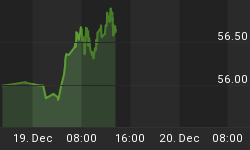Elliott wave analysis saw corn's biggest moves coming
You could be to technical analysis what tweens are to texting, and it wouldn't make a lick of difference: You still wouldn't necessarily be trading at your fullest potential. The reason being: Without Elliott wave in your technical analysis toolbox, it's like looking at the world of opportunity through a narrow keyhole and ultimately missing the big picture.
The Wave Principle can help you unlock that door. Teaching you how to do it is the goal of the latest free educational report from our Club EWI resource center, titled "How the Wave Principle Can Improve Your Trading." In this six-page article, our editorial staff reveals these (and many more) ways in which the wave model makes up for the ways ordinary technical methods fall short:
- Technical studies can get you on board a trend, but the Wave Principe can say specifically at which point that trend has failed -- namely, when prices violate critical support or resistance levels in your price charts.
- Technical studies can identify the direction of a trend, but the Wave Principle can determine how high prices will rally or how low they will fall.
- Technical studies can recognize the strength of a trend, but the Wave Principle can discern the maturity of one; when it's time to take profits or raise protective stops.
- Technical studies can recognize the strength of a trend, but the Wave Principle can discern the maturity of one; when it's time to take profits or raise protective stops.
Now for the fun part: Putting the Wave Principle to use in the real-time action of a well known market. For this, we turn to EWI's chief commodity analyst and long-time Futures Junctures Service editor Jeffrey Kennedy. (Note: Futures Junctures Service is a two-part package that includes Daily Futures Junctures and its long-term sister publication Monthly Futures Junctures.)
Over the last year, Jeffrey's timely navigation of the Corn market showcases the ability of Wave analysis to identify high-probability trade set-ups. To illustrate, we'll start with this price chart of corn since March 2009 (courtesy of ino.com) -- punctuated with brief excerpts from Jeffrey's Monthly Futures Junctures.

Below are the expanded versions of Jeffrey's analysis:
June 2009 Monthly Futures Junctures:
"The Party's Over In Grains: The corrective advance in corn that began in December 2008 is complete at 450 (basis July). This means that the stage is set for renewed selling that should push corn prices to below the 2008 low of 325 1/4. Moreover, considering the manner and extent of the decline since the early June top, wave patterns argue strongly that this is an intermediate tradable top."
September 2009 Monthly Futures Junctures: Presented an updated chart that showed prices set to embark on a powerful uptrend above $4 and wrote: "After a Rally, More Decline."
January 2010 Monthly Futures Junctures: Price chart showed wave c of a zigzag coming to an end and wrote: Wave c = .618 times wave a + wave a at $4.26.
When applied skillfully, no method gets you into a trend earlier and out of a failed move faster than the Wave Principle. Read the entire free 6-page report "How the Wave Principle Can Improve Your Trading" today.
Here's what you'll learn:
- How the Wave Principle provides you with price targets
- How it gives you specific "points of ruin": At what point does a trade fail?
- What specific trading opportunities the Wave Principle offers you
- How to use the Wave Principle to set protective stops
- Keep reading this free lesson now.















